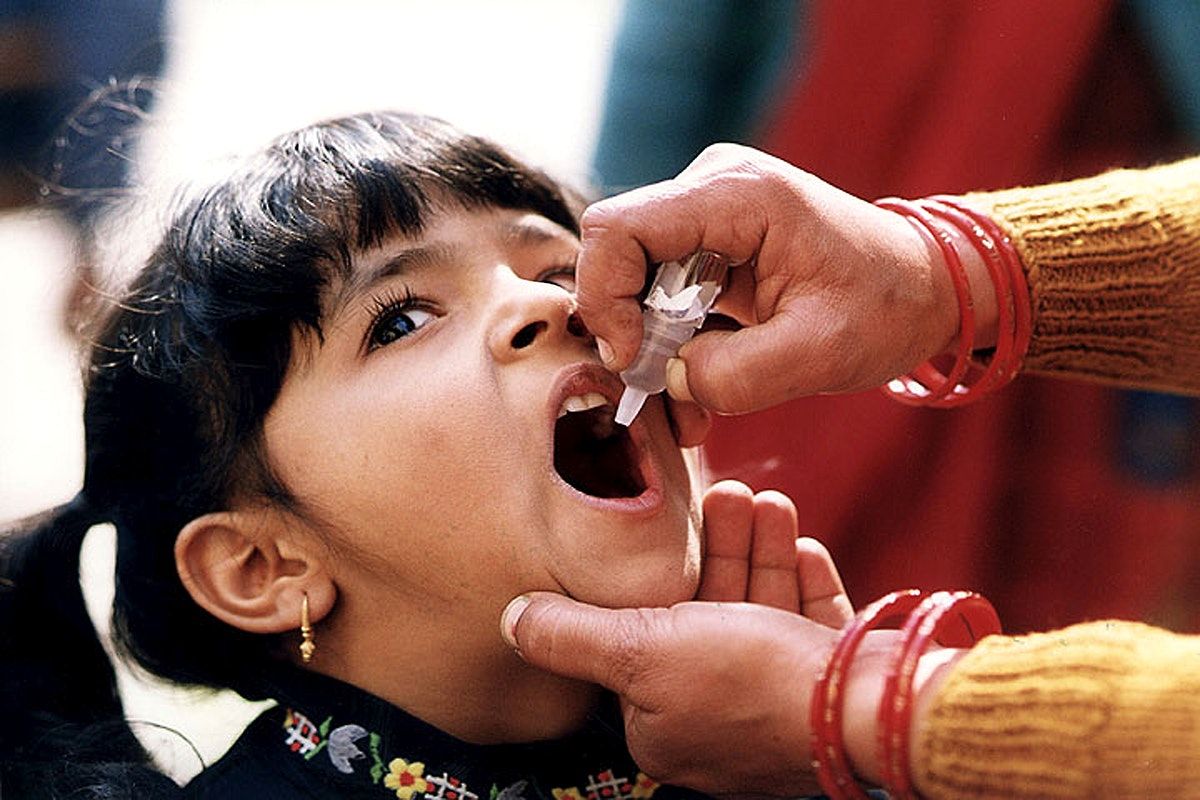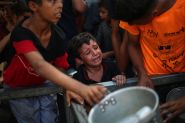- Home
- Middle East
- Polio: The Aborted Eradication of a Preventable Disease

An Indian girl receives an oral polio vaccine dose administered by a trained healthcare professional. ©CDC
October 24 marked World Polio Day, yet another year passes without achieving eradication. Cases continue to resurge, especially in Afghanistan and Pakistan, as the wild poliovirus circulates. Simultaneously, concerns grow over vaccine-derived circulating poliovirus, particularly in Gaza and Indonesia.
Poliomyelitis, or polio, is a viral disease caused by the poliovirus, which invades the nervous system and spreads primarily through contaminated water or food. Highly contagious, it affects mainly unvaccinated children under five, with symptoms ranging from mild fevers to irreversible paralysis and death. Despite extensive global efforts, polio remains uneradicated. Today, only type 1 wild poliovirus continues to circulate, restricted to the last endemic countries, Afghanistan and Pakistan. Over the past three years, cases dwindled, with 5, 22, and 12 cases reported in 2021, 2022, and 2023, respectively. However, 2024 saw a resurgence, with 62 cases reported, threatening prior progress. On World Polio Day, October 24, a reflection on the progress against this disease is essential.
An Unfinished Victory
The story began in the early 1950s when Jonas Salk developed an inactivated polio vaccine, made from killed poliovirus. He tested it on volunteers, including himself and his family. In 1954, Salk launched a large-scale trial involving over a million children. On April 12, 1955, he announced conclusive results: the vaccine was safe and effective. That year, polio cases in the United States numbered around 29,000. Within two years of vaccine rollout, cases dropped dramatically to fewer than 6,000. By 1959, 90 countries had adopted the Salk vaccine. This success was followed by the oral, live-attenuated vaccine developed by Albert Sabin in 1961, which, through rapid administration, further reduced cases globally. In 1988, the World Health Organization (WHO) launched the Global Polio Eradication Initiative, aiming for eradication by 2000. Although significant progress was made, the goal remains unmet due to various obstacles.
False Vaccination Campaign
Complex factors contributed to sporadic resurgences globally. Key obstacles include community resistance, especially in countries like Nigeria and Pakistan, where misinformation falsely claimed vaccines were Western tactics to cause sterility. These beliefs fueled distrust toward vaccination programs, compromising efforts. In addition, a fake hepatitis B vaccination campaign in Abbottabad, Pakistan, orchestrated by the CIA to collect DNA from Osama bin Laden’s relatives before his elimination in 2011, had disastrous effects. Vaccination campaigns became perceived as fronts for espionage, leading to healthcare workers being barred from some areas and even attacked. Some lost their lives, causing United Nations-supported vaccination efforts to cease, depriving millions of children in Pakistan, Afghanistan, Syria, and Iraq of essential protection.
Vaccination Coverage and Surveillance
Armed conflicts and political instability have also hindered polio eradication efforts. On October 23, 2024, WHO postponed a vaccination campaign in northern Gaza due to “intensive bombings” by the Israeli army after the first positive case in 25 years was detected. Moreover, vaccination coverage varies significantly worldwide, especially in remote or vulnerable regions (sub-Saharan Africa, parts of South Asia and Latin America), where logistical challenges are formidable. Health infrastructure is often inadequate, complicating the implementation of effective vaccination campaigns. The cold chain management necessary to keep vaccines at suitable temperatures is frequently disrupted. Elsewhere, healthcare personnel shortages and inadequate epidemiological surveillance slow response times to outbreaks, allowing the virus to spread before containment measures can be implemented.
Vaccine-Derived Poliovirus
Polio can occasionally arise from the oral vaccine itself. Circulating vaccine-derived poliovirus (cVDPV) can spread similarly to wild poliovirus. When a person receives the oral vaccine, the attenuated virus replicates in the intestine and is excreted in stools. In environments with poor sanitation and low vaccination coverage, this virus can spread via contaminated water or food. Over time, the attenuated virus may acquire genetic mutations that restore its virulence in under-immunized populations. Between January 2023 and June 2024, 74 cVDPV outbreaks were reported, totaling 672 confirmed polio cases across 39 countries or regions, according to data from the United States Centers for Disease Control and Prevention. Both vaccine types (inactivated and live-attenuated) have advantages, drawbacks, risks, and benefits, with vaccine selection depending on epidemiological context, public health goals, and resources.
In summary, significant advances have been made toward polio eradication, but it remains a complex global challenge. Political, logistical, and financial hurdles have impeded this ambition. Achieving complete eradication of this preventable disease requires strengthening health systems, enhancing vaccination coverage, and combating misinformation. The future of polio eradication depends on sustained international mobilization and close coordination with local populations.
Read more





Comments